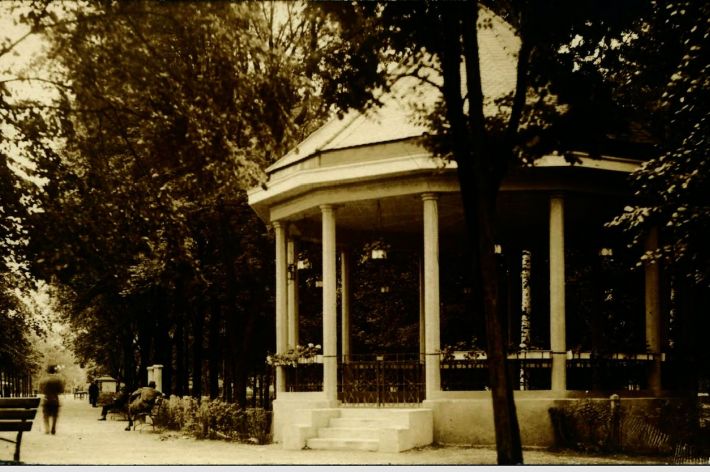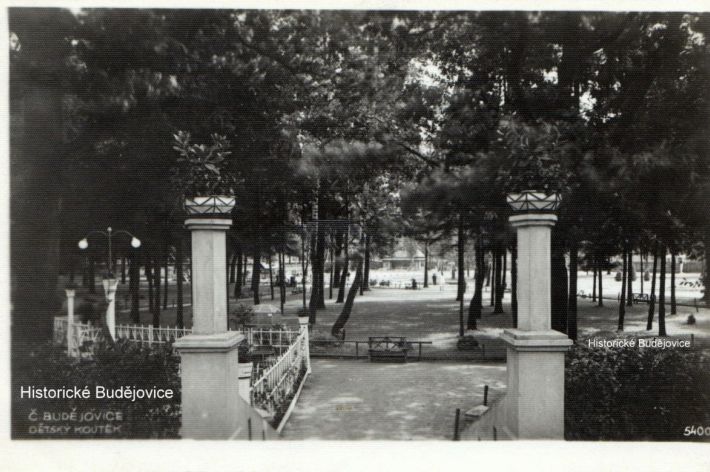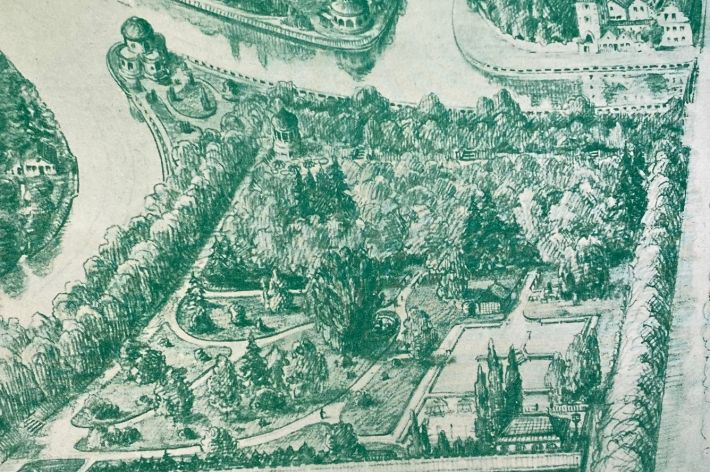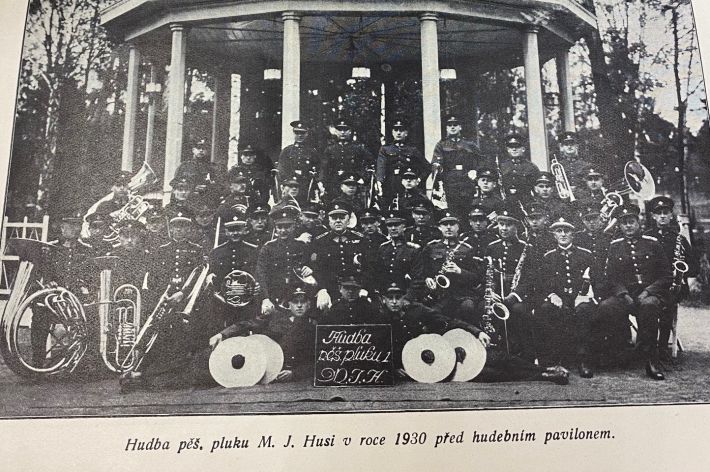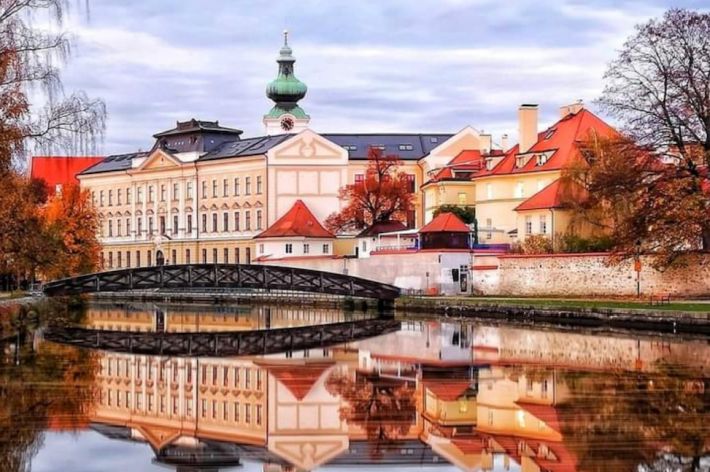History of the Háječek Café
Háječek was the most beautiful corner of the town. After 1990 it lost its status.The first impulse to build the later famous promenade music pavilion in Háječek was subtle. Captain Ferdinand Bartos, the bandmaster of the military music, complained sometime in May 1925 that the music was hard to hear on the avenues. The bookseller Raimund Marek and the chief police commissioner Bohuš Letovský were present. One of them had the idea that the band could play in a roofed pavilion, from where the sound would spread better. According to the press of the time, they were men of action and immediately founded the "Comité for the construction of a music pavilion. It would become a café The three men acting for the Comité won wider support (but were also rebuffed) from several politicians, professors and officers. On June 13, 1925, a select committee of the Komité was validly elected: chairman František Velík, vice-chairman Raimund Marek, managing director and treasurer Bohuš Letovský, account auditors Václav Lacina, director of municipal pensions, and Captain Ferdinand Bartoš. Additionally, the town gardener Vojtech Novak was also recruited to the committee and designed the park layout and vegetation. The pavilion was opened with great glory on 27 September 1925, designed by Otto Weinzettel and built by August Teverný's company.
At that time, cubism was reverberating in the town, and so the pavilion and the staircase from the avenues down to Háječek have cubist elements. During the celebration, a flower procession was organised with children riding on flower-decorated cars from the Beseda through the town to the avenues. The Comité had particular problems with the Club for Old Budejovice. The committee wanted to build benches at the pavilion (normally, since someone likes to sit while listening). The Club for Old Budejovice protested against this to the town hall on the grounds that the benches would obscure views of Sokol Island and obstruct views of the tree roots. The town hall had to address the protest. Only when the Komité, under pressure, declared that it was a temporary solution did the town hall allow the benches. (The Club for Old Budějovice did not officially protest further.) Under the pavilion, Jan Vaněček, a café owner of the cabaret, restaurant and café Corso, set up a small café. It looked more like a basement, sitting outside with coffee. In 1926, the Háječek downstairs was built, mainly for the entertainment of children. Kopecký's hut was built, where a puppet theatre was performed. A small zoo was the most popular, most of which was a cage with monkeys. During the German occupation, the music pavilion, the alleys and the Háječek Dolní were not maintained. The remains of the zoo cages were still there around 1948. The music pavilion came to life from time to time. Sometimes it was even used for dancing. After 1990, a mini café opened again on its ground floor for a while, but overall Háječek lost its first-republican promenade style and informal status - the nicest corner of the city. Well, except for the FFP (Workers' Film Festivals), which used to be packed. The pavilion (gloriet, gazebo) stands in a quality location at the romantic confluence of rivers, the observatory (with the rest of the botanical garden) and even the Summer Cinema adjoins. And it was started by chaplain kpt. Ferdinand Bartos, when he complained that it was hard to play freely in the alleys. Authors Jan Schinko | Photo Jana Kroneislová
Source:
https://budejcka.drbna.cz/zpravy/spolecnost/23124-hajecek-byl-nejhezcim-koutkem-mesta-po-roce-1990-svuj-statut-ztratil.html?utm_source=copy
https://www.c-budejovice.cz/hajecek-na-pohlednicich-fotografiich

